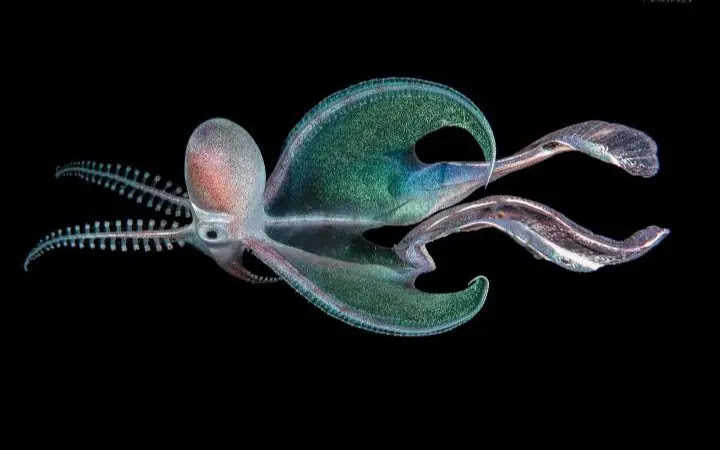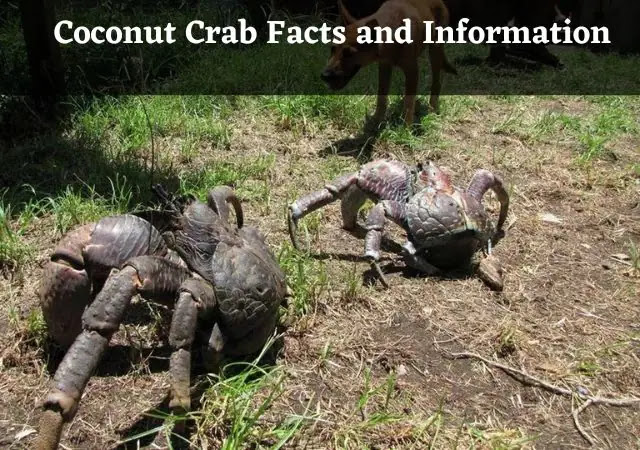Blanket Octopus: Nature’s Hidden Wonder

Marine creatures have long captivated our imaginations with their remarkable adaptations and intriguing behaviors. From the colorful corals of coral reefs to the majestic whales of the deep sea, the ocean is teeming with fascinating life forms. Among these extraordinary creatures is the blanket octopus, an enigmatic species that stands out for its unique appearance and intriguing characteristics.
In this blog post, we will delve into the captivating world of the blanket octopus, exploring its distinct features, extraordinary adaptations, and role in the complex marine ecosystem. Join us as we uncover the secrets of this mesmerizing creature that resides beneath the waves.
.
Overview
The Blanket Octopus, scientifically known as Tremoctopus spp. is a marine species that belongs to the family Tremoctopodidae. It is known for its striking appearance and unique adaptations. While there are multiple species within the genus Tremoctopus, the most well-known is Tremoctopus violaceus.
In terms of size, the blanket octopus displays significant sexual dimorphism. Males are substantially smaller, reaching only a few centimeters in length, while females may grow to lengths of up to 2 meters (6.6 feet). Usually transparent or pale in color, their bodies have iridescent flashes of blue, purple, and silver.
.
Scientific Name And Classification
The Blanket Octopus belongs to the genus Tremoctopus and is scientifically known as Tremoctopus spp. It is a member of the family Tremoctopodidae, which includes other octopus species with similar characteristics and adaptations.
Here is the classification of the Blanket Octopus:
Scientific name: Tremoctopus Kingdom: Animalia Phylum: Mollusca Class: Cephalopoda Order: Octopoda Family: Tremoctopodidae Genus: Tremoctopus Species: spp.
Please note that within the genus Tremoctopus, there are multiple recognized species, such as Tremoctopus violaceus, Tremoctopus gelatus, and Tremoctopus gracilis, among others. Each species may have slight variations in appearance and distribution.
.
Key Characteristics
The beautiful blanket octopus possesses several distinctive features that set it apart from other octopus species. One of its most remarkable adaptations is the presence of long, These webbed extensions are often called “blankets”, hence the name of the octopus, blanket octopus.
When threatened, the octopus unfurls these blankets, creating a larger, more imposing silhouette, potentially deterring or confusing predators.
Additionally, the Blanket Octopus showcases exceptional sexual dimorphism. The size difference between males and females is astonishing, with females being significantly larger than males. This characteristic is rare among cephalopods and is believed to be an adaptation related to reproduction and mating behavior.
In the next, we will delve deeper into the unique adaptations of the blanket octopus, shedding light on its intriguing defense mechanisms and reproductive strategies.
.

Blanket Octopus Species
The Blanket Octopus encompasses several recognized species within the genus Tremoctopus. Some of the notable species include:
1. Tremoctopus violaceus: This species is the most well-known and commonly studied among the Blanket Octopuses. It displays distinct sexual dimorphism, with females reaching lengths of up to 2 meters and males being significantly smaller.
2. Tremoctopus gelatus: This species is also known for its striking appearance and unique adaptations. It shares similar characteristics with other Blanket Octopuses, including the presence of webbed “blankets” and sexual dimorphism.
3. Tremoctopus gracilis: This species is characterized by its slender body shape and delicate appearance. It is found in tropical and subtropical oceans and shares many traits with other blanket octopus species.
All About Blanket Octopus
Appearance
The Blanket Octopus possesses a distinct and captivating appearance. While the exact physical characteristics may vary slightly among species and individuals, the following features are commonly associated with the blanket octopus:
1. Size: The size of the blanket octopus showcases remarkable sexual dimorphism. Females can grow to impressive lengths of up to 2 meters (6.6 feet), making them significantly larger than males, which only reach a few centimeters in length.
2. Body Shape: The body of the blanket octopus is typically elongated and slender, with a streamlined shape that aids in swimming through open waters. Its body lacks the roundness often associated with other octopus species.
3. Coloration: The coloration of the blanket octopus is visually striking. The body is generally translucent or pale, and it often exhibits iridescent hues of blue, purple, and silver. These vibrant colors contribute to the octopus’s beauty and play a role in its camouflage and signaling.
4. Webbed Arms: One of the defining features of the blanket octopus is the presence of long, thin webbing between its arms. These webbed extensions are often referred to as “blankets” and can be dramatically unfolded to create a larger and more imposing silhouette. The webbing is typically transparent or translucent, blending with the surrounding water when not fully extended.
Overall, the blanket octopus’s appearance is a testament to its remarkable adaptations and unique characteristics, making it a visually stunning and captivating creature of the ocean depths.
.
Behavior and Ecology Aspects
Feeding Habits
The Blanket Octopus is a carnivorous predator that feeds primarily on small prey items found in the open waters. Its diet includes various marine organisms, such as small fish, crustaceans, and pelagic invertebrates. To capture its prey, the octopus employs stealth and agility, using its tentacles to snatch and immobilize its prey before consuming it
Swimming Abilities
The Blanket Octopus is an exceptional swimmer, capable of navigating through the open ocean with agility and grace. It propels itself through the water using a combination of jet propulsion and undulating movements of its arms. The elongated body shape and streamlined form allow for efficient movement, enabling the octopus to cover long distances and traverse different depths within its oceanic habitat.
Behavior in the Wild
The Blanket Octopus is typically a solitary creature, preferring to roam the open ocean independently. It is known for its elusive nature, often avoiding encounters with other species. When threatened, the octopus can display defensive behavior by unfurling its webbed arms to create a larger and more intimidating appearance, potentially deterring or confusing predators.
Ecological Role
As a predator in the pelagic zone, the blanket octopus plays an important role in the marine ecosystem. By controlling the populations of prey species, it helps maintain balance within the food web. Additionally, the octopus may serve as a prey item for larger marine predators, contributing to energy transfer through the food chain.
Interactions and Symbiotic Relationships
While specific interactions or symbiotic relationships involving the blanket octopus are not extensively documented, it is possible that this species engages in various ecological interactions. For example, it may serve as a host or habitat for other organisms, such as smaller crustaceans or parasites, creating micro-ecosystems within its vicinity.
Understanding the behavior and ecological role of the blanket octopus is essential for comprehending its place within the complex web of marine life and appreciating its significance in maintaining the health and balance of the ocean ecosystem.
.
Habitat and Distribution
The blanket octopus is a pelagic species, meaning it primarily inhabits the open waters of the ocean rather than residing near the seabed or coastal regions. Here are some key aspects of the Blanket Octopus’ habitat:

1. Oceanic Habitat: Blanket Octopuses are found in warm oceans worldwide, with a preference for tropical and subtropical regions. They are most commonly observed in the Pacific, Atlantic, and Indian Oceans.
2. Pelagic Zone: Within the ocean, Blanket Octopuses occupy the pelagic zone, which encompasses the open waters above the continental shelf. They have a streamlined body form, excellent swimming skills, and characteristics that enable them to flourish in the water column, making them an excellent fit for this habitat.
3. Depth Range: Blanket Octopuses can be found at varying depths within their habitat. Although they are frequently seen swimming close to the ocean’s surface, they can also dive as far as 200 meters (650 feet). Their vertical distribution may depend on factors such as prey availability, temperature gradients, and reproductive behavior.
4. Migration and Distribution: Blanket Octopuses have the ability to migrate and move across different regions of the ocean. Their distribution can be influenced by factors like ocean currents, food availability, and reproductive requirements. However, specific migration patterns or seasonal movements are not well-documented for this species.
Mainly, the Blanket Octopus is a pelagic species that roam the warm waters of the world’s oceans, occupying various depths within the water column. Its habitat choice allows it to explore and adapt to the ever-changing conditions of the open ocean.
.
Defense Mechanism and Predators
The blanket octopus (Tremoctopus spp.) has evolved several fascinating defense mechanisms to protect itself from predators. Here are some notable defense strategies:
1. Size and Coloration: Female blanket octopuses are significantly larger than males and can grow up to 2 meters in length, while males are much smaller. This difference in size acts as a form of defense by making the females appear more formidable and potentially deterring predators.
2. Mantle Display: When threatened, the female blanket octopus can unfurl a large, webbed membrane called the “blanket” that spans between its enlarged arms. This display creates an intimidating silhouette, making the octopus appear larger and more visually conspicuous to potential predators.
3. Bioluminescence: The blanket octopus possesses the ability to produce light, known as bioluminescence. It can use this ability to create pulsating displays of light along its body, which may serve to startle or confuse predators.
4. Ink Release: Like other octopuses, the blanket octopus can release a cloud of dark ink when threatened. The ink acts as a smokescreen, temporarily obscuring the predator’s vision and providing the octopus an opportunity to escape.
While the blanket octopus has evolved various defense mechanisms, it still faces predation from several marine species. Some potential predators of this octopus include large predatory fish, such as tuna and mahi-mahi, as well as marine mammals like dolphins and sharks. However, due to the limited scientific research on the species, our knowledge of specific predators and their impact on this octopus populations is limited.
It’s worth noting that the defense mechanisms employed by blanket octopuses are more pronounced in females than males. Males have evolved into smaller body sizes and different mating strategies that involve attaching themselves to females to transfer sperm, reducing the risk of predation associated with their smaller size.
Further scientific research is necessary to gain a more comprehensive understanding of the predators and the interplay between defense mechanisms and predation in the lives of blanket octopuses.
.
Reproduction And Lifespan
The blanket octopus is a fascinating marine creature known for its striking appearance and unique behavior. While these octopuses have several species, the most well-known is Tremoctopus violaceus.
Reproduction in blanket octopuses involves sexual reproduction, where males and females come together to mate. The mating behavior of these octopuses is quite remarkable. Male blanket octopuses are significantly smaller than females, measuring only a few centimeters in length, while females can reach lengths of up to 2 meters.
During mating, the blanket octopus male transfers a specialized arm called a hectocotylus into a pouch-like structure called the mantle cavity of the female. This arm carries sperm packets, which are then used by the female to fertilize her eggs when she is ready to reproduce.
One intriguing aspect of this octopus reproduction is sexual dimorphism, meaning there are significant differences between males and females. Male blanket octopuses have evolved modified tentacles known as “hectocotyli,” which are used exclusively for mating.
This behavior is thought to be an adaptation that allows males to transfer sperm more efficiently and avoid the potential dangers associated with mating with such large females.
Regarding the lifespan of blanket octopuses, it is challenging to provide a precise answer as there is limited scientific research on their longevity.
However, like many other cephalopods, octopuses, including blanket octopuses, generally have relatively short lifespans. Most octopuses live for only a few years, typically around 1 to 2 years, although some species can live slightly longer.
It’s crucial to remember that our knowledge about blanket octopuses is still developing, and further study is required to provide us with a complete picture of their reproductive cycle and lifetime.

.
Conservation and Threats
The conservation status of the blanket octopus (Tremoctopus) is not well-documented due to limited research and data availability. However, as with many marine species, there are several potential threats that may impact their populations. Some of the general threats faced by marine organisms, including this octopus, are as follows:
- Habitat degradation: Pollution, including chemical contaminants, plastics, and oil spills, can harm the habitats where blanket octopuses reside. Destruction of their natural habitats, such as coral reefs and other marine ecosystems, through factors like coastal development and destructive fishing practices, can also negatively impact their populations.
- Overfishing: While blanket octopuses are not typically targeted for direct fishing, they may face indirect effects from overfishing. The depletion of fish populations, which are part of their diet, can disrupt their food chain and impact their survival.
- Climate change: Marine creatures, such as the blanket octopus, may suffer as a result of increasing ocean temperatures, ocean acidity, and changes in ocean currents. These modifications may cause habitat disruption, decrease the availability of prey, and reduce the reproductive success of the species.
- Bycatch: Blanket octopuses can be incidentally caught in fishing gear, such as trawls and nets, intended for other target species. Being unintentionally caught as bycatch can cause injuries or death to these octopuses.
- Lack of knowledge: Due to their elusive nature and deep-sea habitat preferences, our understanding of blanket octopuses is still limited. The lack of comprehensive data on their population size, distribution, and specific conservation needs makes it challenging to develop effective conservation strategies for their protection.
.
Where do blanket octopus live?
Blanket octopus are predominantly found in tropical and subtropical oceans around the world. They have a wide distribution and can be encountered in various marine environments. However, they are most commonly observed in the open ocean, specifically in the upper layers of the water column.
What do blanket octopus eat?
Blanket octopuses are carnivorous predators that primarily feed on small prey, including crustaceans, small fish, and various pelagic invertebrates. They have been observed feeding on organisms such as krill, copepods, and small squids. The diet of the blanket octopus may vary depending on the availability of prey in their habitat.
How big is a blanket octopus?
Blanket octopuses exhibit significant sexual dimorphism in size. Females are much larger than males, reaching lengths of up to 2 meters (6.5 feet) or more. In contrast, males are considerably smaller, measuring only a few centimeters long. This striking difference in size between the sexes is one of the remarkable characteristics of blanket octopuses.
.
- The Blue Dragon Sea Slug: A Hidden Gem of the Open Ocean
- Sea Robin: Amazing Fish with Legs and Fins
- Top 10 Cutest Octopus Species






